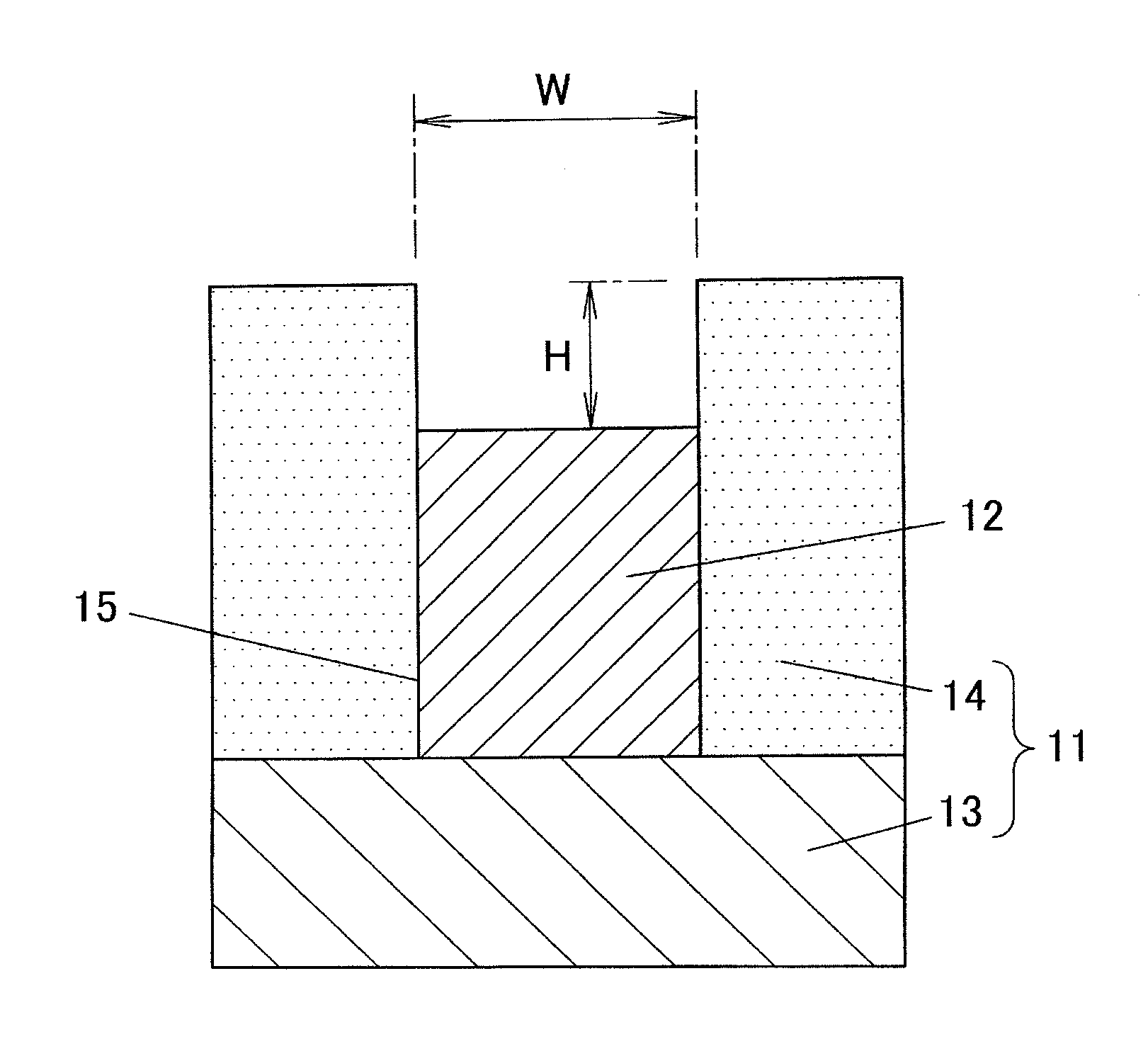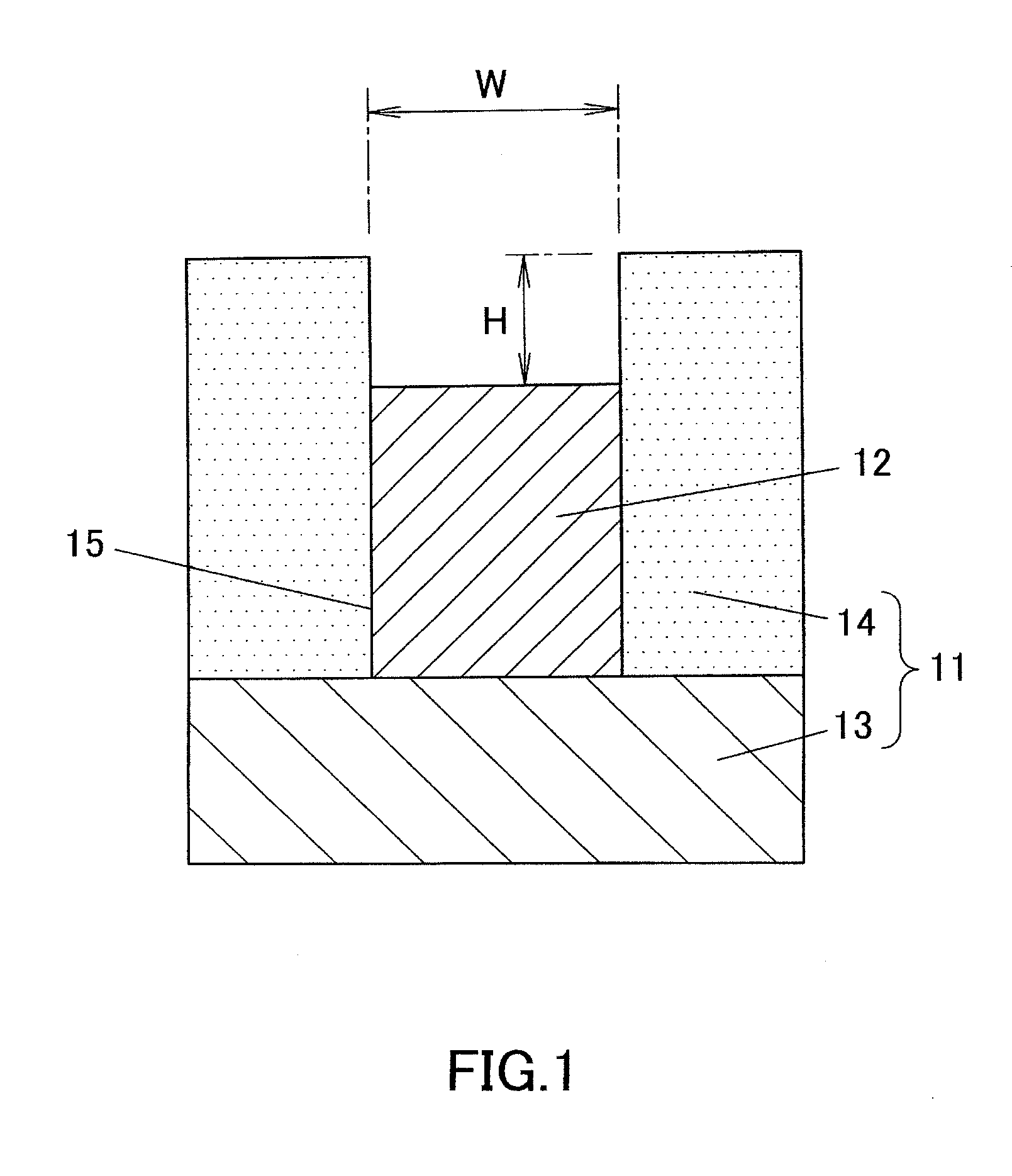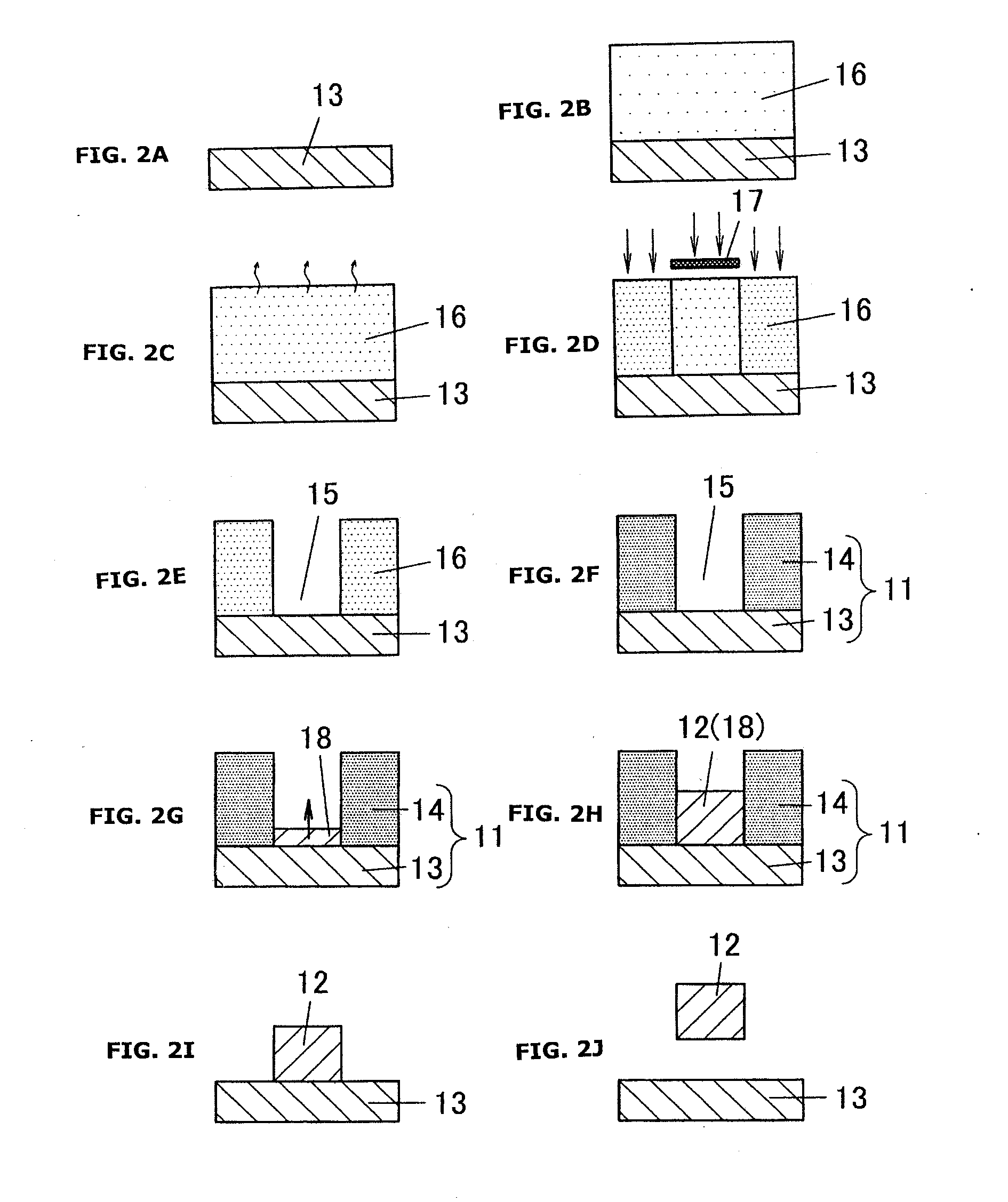Electroforming method
a technology of electroforming and metal-forming products, applied in the field of electroforming methods, can solve the problems of reducing the moldable shape of metal-formed products, reducing the efficiency of manufacturing, and increasing the cost of manufacturing
- Summary
- Abstract
- Description
- Claims
- Application Information
AI Technical Summary
Benefits of technology
Problems solved by technology
Method used
Image
Examples
first embodiment
[0059]FIG. 1 is a sectional view for describing an electroforming method (hereinafter referred to electroforming) according to a first embodiment of the present invention, depicting a mold 11 and a metal-formed product 12 electroformed by using the mold 11.
[0060]The mold 11 for use in the first embodiment is produced by laminating a thick insulating layer 14 on a flat upper surface of a conductive base material 13. In the insulating layer 14, a cavity 15 (a recessed part) in a reversed shape of the metal-formed product 12 is formed. On the bottom surface of the cavity 15, no insulating layer 14 is left, and an upper surface of the conductive base material 13 is exposed from the entire bottom surface of the cavity 15. In the cavity 15 of the mold 11, the metal-formed product 12 is formed by electroforming. Note that FIG. 1 depicts a cross section of the cavity 15 in a direction (a transverse direction) orthogonal to a longitudinal direction.
[0061]Next, a process of fabricating the me...
second embodiment
of the Invention
[0094]FIG. 13A is a sectional view of a mold 31 according to a second embodiment of the present invention. In this mold 31, a recess 32 of a desired shape is formed on the upper surface of the conductive base material 13 in the cavity 15, and this recess 32 configures part of the cavity 15. Thus, by electrodepositing a metal inside the cavity 15, the metal-formed product 12 of a more sophisticated shape can be formed.
[0095]Also, while the recess 32 is formed in part of the bottom surface of the cavity 15 in the embodiment depicted in FIG. 13A, the recess 32 may be formed in the entire bottom surface of the cavity 15, as depicted in another embodiment depicted in FIG. 13B.
[0096]Furthermore, in still another embodiment depicted in FIG. 14, the recess 32 is formed on the upper surface of the conductive base material 13 in a range wider than the bottom surface of the cavity 15, and part of the recess 32 is filled with the insulating layer 14.
[0097]Note that when the uppe...
third embodiment
of the Invention
[0098]FIG. 15 is a sectional view of a mold 41 and the metal-formed product 12 along a longitudinal direction according to a third embodiment of the present invention. In the present embodiment, a bottom shape of the cavity 15 in a longitudinal direction is described, by way of example. The description, however, can be applied to a bottom surface in a traverse direction and also to the case where the surfaces in both longitudinal and traverse directions are inclined. However, in any of these cases, electrodeposition in a traverse direction is performed within a range described in the first embodiment. In the present embodiment, in the cross section in the traverse direction, electrodeposition is performed according to the conditions as described in the first embodiment. Furthermore, by performing electroforming also in the longitudinal direction according to the conditions as described in the first embodiment, in comparison between a upper flat part 42a and a lower f...
PUM
| Property | Measurement | Unit |
|---|---|---|
| height | aaaaa | aaaaa |
| height | aaaaa | aaaaa |
| height | aaaaa | aaaaa |
Abstract
Description
Claims
Application Information
 Login to View More
Login to View More - R&D
- Intellectual Property
- Life Sciences
- Materials
- Tech Scout
- Unparalleled Data Quality
- Higher Quality Content
- 60% Fewer Hallucinations
Browse by: Latest US Patents, China's latest patents, Technical Efficacy Thesaurus, Application Domain, Technology Topic, Popular Technical Reports.
© 2025 PatSnap. All rights reserved.Legal|Privacy policy|Modern Slavery Act Transparency Statement|Sitemap|About US| Contact US: help@patsnap.com



